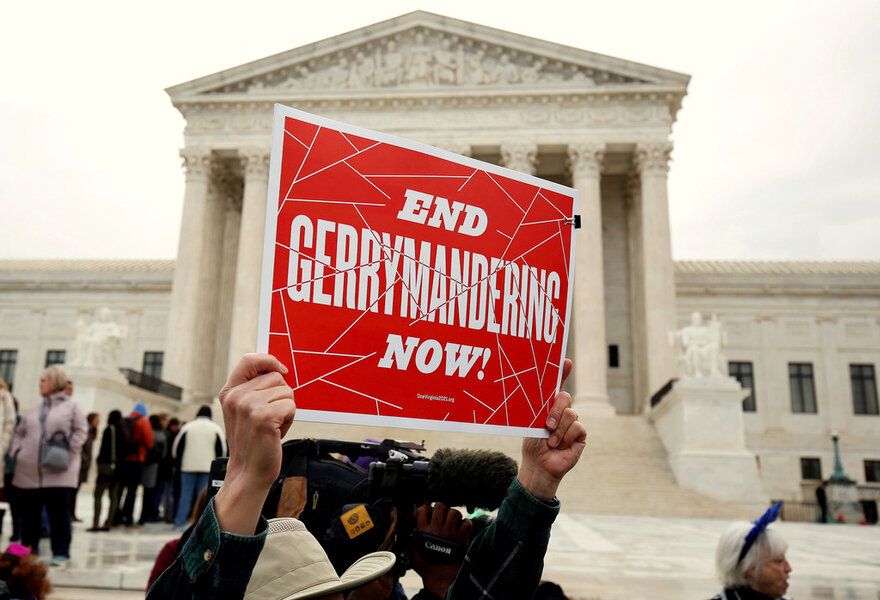The high court’s hint on partisan gerrymandering
Loading...
In a unanimous ruling on Monday, the Supreme Court hinted at how it may someday decide on partisan gerrymandering, or the drawing of electoral districts by state legislators to keep one party in power. Individual voters, the justices concluded, must first show whether they were harmed by the boundaries of their particular voting district. For the courts, the effect of gerrymandering on political or social groups is not a matter of justice.
In other words, the court has now set a high bar for when judges should intervene, if at all, in what is fundamentally a political decision on how to group voters. Courts have long been reluctant to decide when a district’s boundaries favor one party, perhaps hoping voters might someday overcome their political divisions and cooperate in electing representatives who oppose partisan gerrymandering.
In its ruling, the high court did leave a door open for further review of this common practice by both political parties. It sent a case from Wisconsin back to a lower court to allow plaintiffs to prove whether “concrete and particularized injuries” from gerrymandering had placed a burden on their individual votes. The court refused to hear whether Wisconsin’s redistricting by a Republican majority after the 2010 Census had harmed Democrats by “packing” or “cracking” districts with voters along partisan lines.
From the court’s view, the remedy for any gerrymandering lies in defining individual harm, and only in a voter’s district, rather than the effects on a party statewide. In the past, the court has identified such harm when districts were drawn to harm minority voters, such as blacks. But in politics, unlike with race, a voter’s identity can be fluid, depending on multiple factors, shifting from one election to the next or from issue to issue or even across party lines. The justices are wary of setting a permanent rule for redistricting if voters can be impermanent in how they vote.
This reasoning fits into what James Madison had hoped for the American republic. He helped design a democracy that would force individuals to see the greater good by cooperating rather than simply competing for selfish or group interests. Voters would shift their alliances and join forces depending on an issue, knowing that today’s majority could easily be tomorrow’s minority.
Issues may change, but the common interest in getting along does not. Individuals may have a political identity – Democrat or Republican or something else – but they must also recognize the inherent dignity and worth of other citizens. Treating others by social, economic, or political class, even to the point of sorting them into electoral districts by such groupings, only feeds into social fragmentation.
The drawing of lines for electoral districts must build community across partisan divides rather than divide people by mutable political identities. The courts have been wise not to intervene in partisan gerrymandering so far. They do stand ready to remedy individual harm. But perhaps they hope enough voters will see the harm for themselves and use the ballot box and not a lawsuit to fix it.







